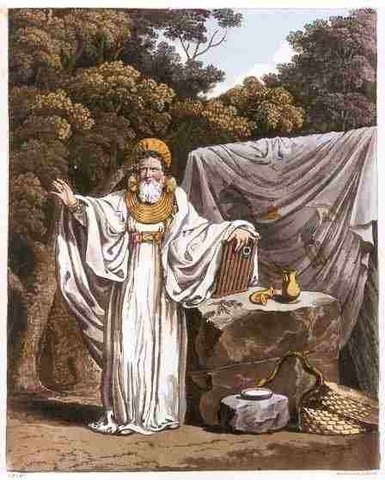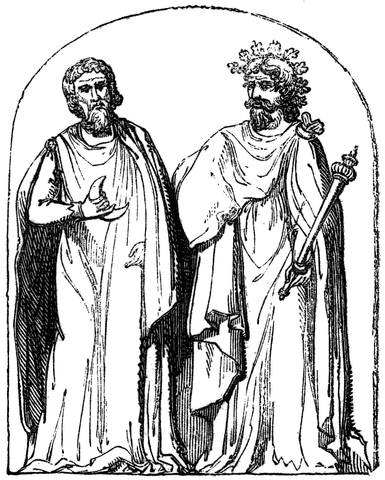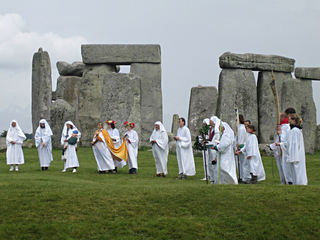Druids in Ireland: What Happened?
The Druids of ancient Ireland have captured imaginations for centuries. From myths of mystical powers to depictions in popular culture as wise priests of nature, the Druids continue to intrigue us. Yet their actual history is often overshadowed by legend. This blog post will examine who the Druids were, how they lived, and what ultimately happened to them in Ireland.
Table of Contents
Introduction to Druids in Ireland
Druids evoke images of secret rituals, sacred groves, and ancient wisdom. They were uniquely crucial in Celtic societies, acting as priests, judges, and teachers. Druids flourished for centuries in Ireland—one of the last bastions of Celtic culture. However, as time passed and religions changed, the Druids experienced a dramatic shift in status. By the end of this blog post, you’ll better understand how these once-influential figures faded from power and how their legacy lives on.
Who Were the Druids in Ireland?

Origins and Role
Druids were the priestly class among the ancient Celts, renowned for their broad knowledge and spiritual authority. They conducted religious ceremonies, interpreted the gods’ will, and provided crucial legal and moral guidance. In Ireland, Druids were respected figures at royal courts, often advising kings and chieftains.
Cultural Significance
Thanks to their mastery of oral tradition, Druids were considered custodians of communal memory. They were believed to possess special insight into the workings of nature and the divine, cementing their high social status.
The Coming of Christianity
Historical Context
Everything changed in Ireland with the arrival of Christianity, traditionally traced to the 5th century and the mission of figures like St Patrick. This new faith quickly gained momentum through monastic communities and the establishment of churches.
Shifts in Power
As Christianity spread, it offered new religious structures and leaders to rival the Druids’ authority. Kings and chieftains who adopted the Christian faith no longer relied on Druids for spiritual guidance. The legal and political functions of the Druids also began to transfer to Christian clerics.
Adaptation and Decline

Role Transformation
This shift didn’t happen overnight, and not all Druids vanished straightaway. Some appear to have adapted, taking on new roles as filid (poets or historians) in the Christian era. Others may have stayed on as advisors in royal courts, focusing more on poetry and storytelling than on leading religious rites.
Gradual Fade
Over time, monastic schools and Christian institutions became the main centres of education and law. As a result, the Druids’ traditional responsibilities—emphasising pagan traditions—were displaced or absorbed into Christian practice. Eventually, the Druids as a formal class disappeared, though their memory lingered.
Representation in Irish Literature
Medieval Manuscripts
Despite their decline, Druids weren’t forgotten. Early Irish tales, such as those found in the Ulster Cycle, are filled with references to Druids, depicting them as powerful magicians, prophets, and advisers to legendary heroes. These stories, written by Christian monks, show respect and suspicion towards the old pagan ways.
Preservation of Lore
Many of these tales survived because Christian scribes recorded them in manuscripts, blending pre-Christian beliefs with Christian interpretation. In these texts, Druids can appear wise but are sometimes cast as sorcerers in a darker light. Nonetheless, their presence in Irish literature has helped preserve a glimpse of pagan Ireland for modern readers.
Modern Romanticism and Revival
18th–19th Century Interest
Centuries later, during the Romantic and Celtic Revival movements, artists and scholars became fascinated by Ireland’s ancient past. Druids were romanticised as guardians of esoteric knowledge and symbols of a lost Celtic Golden Age. While these depictions were more imaginative than historical, they sparked fresh interest in Druidic lore.
Contemporary Neo-Druidry
Various groups have formed modern “Neo-Druidic” movements, seeking to reconnect with nature-based spirituality. These groups draw inspiration from historical sources, folklore, and imaginative reconstructions. Whilst not directly continuing ancient Druidic practice, they reflect a desire to revive and celebrate Celtic heritage.
Conclusion
Although the Druids once enjoyed significant power and prestige in Ireland, the rise of Christianity led to the gradual erosion of their influence. Over time, Christian clerics and new institutions of learning absorbed their roles and functions. Yet they remain a captivating part of Irish cultural history, surviving in myths, literature, and folklore and inspiring modern revivals that keep the Druidic spirit alive in new ways.
Recommended Reading:
- Lady Augusta Gregory’s Gods and Fighting Men
- T.W. Rolleston’s Celtic Myths and Legends
- Marie-Louise Sjoestedt’s Gods and Heroes of the Celts

